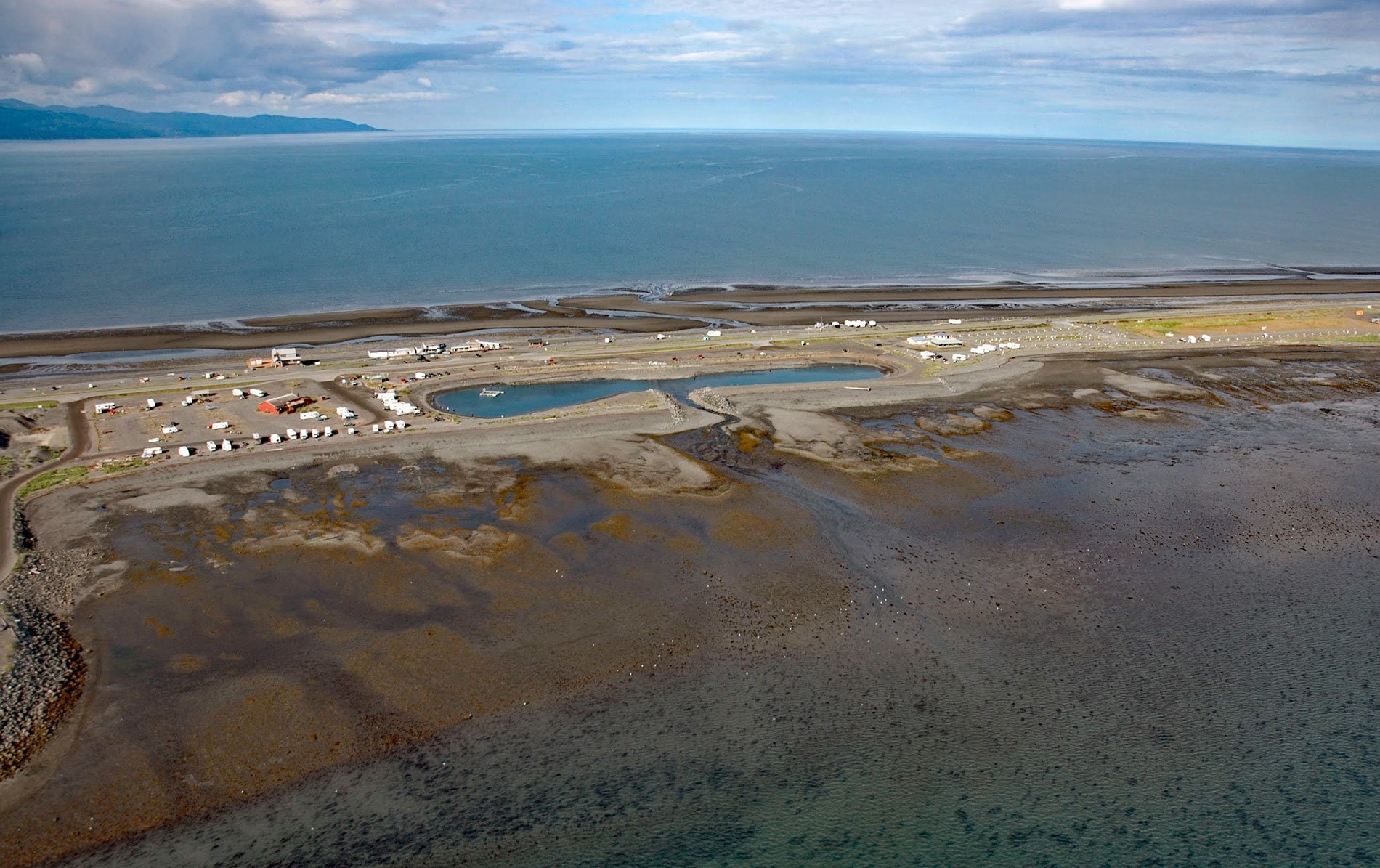The Dudiak Fishing Lagoon, also known as the Fishing Hole, is located on the Homer Spit, a peninsula projecting 4 miles (6.5 km) southeast from the northern shore of Kachemak Bay, about 14 miles (23 km) northeast of Seldovia and 4 miles (6.5 km) southeast of Homer, Alaska. The lagoon is a man-made tidal embayment of about 5 acres (2 ha) that is annually stocked with Chinook and coho salmon smolts. In 2005, the lagoon was named for Nick Dudiak, a fisheries biologist with the Alaska Department of Fish and Game who wanted to create a fishing opportunity accessible to anglers of all ages and abilities while bringing a financial boost to the community.
The fishing lagoon began as a dredged basin near the harbor for cargo barges. In 1984, the Alaska Division of Sport Fish began stocking Chinook or ‘king’ salmon smolt in the unused lagoon in an effort to establish an easily accessible recreational fishery. A coho or ‘silver’ salmon smolt-stocking program was added in the late 1980s to further enhance sport fishing opportunities. Stocking of both Chinook and coho salmon has continued on an annual basis with smolt from the new William Jack Hernandez Sport Fish Hatchery in Anchorage. Salmon smolt are released in the lagoon and they leave to mature in open water. Returning adult fish gather in the lagoon searching for a non-existent spawning stream creating a ‘terminal fishery‘ for recreational anglers. In 1990, the City of Homer, the South Peninsula Sportsman’s Association, and the Alaska Department of Fish and Game were co-recipients of a national award recognizing the Nick Dudiak Fishing Lagoon as the best fishery enhancement project in the nation.
Due to the success of stocking efforts and the popularity of the site, the City of Homer enlarged the lagoon in 1994. In 1999, the construction of paved handicapped parking and a series of ramps and landings inside the fishing lagoon allows anglers with a mobility impairment the opportunity to participate in an award-winning recreational fishery. In 2009, 2010, and 2011, algal blooms caused young fish to die and delayed stocking. The lagoon must be periodically dredged to restore the original depth profile of the lagoon to maintain ocean circulation and mitigate sedimentation. The outer banks of the fishing lagoon were also hardened to reduce maintenance costs to the City of Homer and to help preserve the integrity of the site from damage by waves and winter storms. Read more here and here. Explore more of the Nick Dudiak Fishing Lagoon here:

